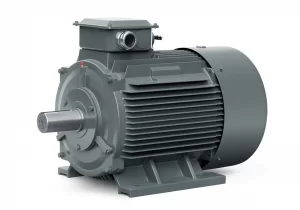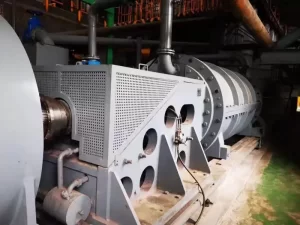The world of electric motors is buzzing with innovation, and at the heart of this revolution lies the permanent magnet synchronous motor (PMSM). Renowned for its stellar efficiency, impressive power density, and compact design, the PMSM has become the driving force behind countless applications, from whisper-quiet electric vehicles to the tireless arms of industrial robots. But behind this facade of shared brilliance, a fundamental rivalry simmers: the clash between surface-mounted PMSM (SPMSM) and interior PMSM (IPMSM).
Deciphering the nuances of these two PMSM titans can be the difference between electrifying success and a costly engineering impasse. This blog post embarks on a thrilling quest to unravel the mysteries of SPMSM and IPMSM, empowering you to make the ultimate decision for your specific application.
Picture a ballet of magnets gracefully arranged on the rotor’s surface, their magnetic field extending effortlessly to engage the stator windings. This elegant choreography defines the SPMSM, a motor that embraces simplicity and cost-effectiveness. SPMSMs are often used when there is little change in load and no flux weakening is needed.
-Elegance in Simplicity:SPMSMs captivate with their straightforward construction, making them relatively easy and economical to manufacture.
-The Symphony of Sinusoidal Back EMF:The stator windings are meticulously designed to orchestrate a smooth, sinusoidal magnetic flux density in the air gap, resulting in a harmonious sinusoidal back EMF waveform. This translates to quieter operation and minimized torque ripple, making them ideal for noise-sensitive applications.
-Agility in Response:With magnets residing on the surface, SPMSMs boast a larger effective air gap, leading to lower inductance. This translates to less electrical “resistance,” facilitating rapid current response and nimble dynamic behavior. This agility makes them perfect for applications demanding swift changes in speed or position, such as high-performance servo drives, precision robotics, and responsive traction control systems.
-Predictability in Torque:SPMSMs are renowned for their linear torque production. The torque output scales proportionally with the current, making them highly predictable and easy to control, particularly in applications requiring precise torque regulation.
-Susceptibility to Demagnetization:The Achilles’ heel of SPMSMs lies in their vulnerability to demagnetization. Because the magnets are exposed to the magnetic field generated by the stator windings (armature reaction field), they can weaken, especially at high speeds or under heavy loads. This weakness makes them less suitable for high-speed driving. To mitigate this risk, a protective sleeve, typically made of a non-magnetic, electrically conductive material, is often employed.
-Limited High-Speed Prowess:While SPMSMs excel in rapid response, they are not the optimal choice for applications demanding sustained high-speed operation due to the demagnetization risk.
Journey into the depths of the rotor, where permanent magnets are strategically embedded within the core itself. This robust architecture defines the IPMSM, a motor engineered for raw power, exceptional efficiency, and unwavering high-speed performance. IPMSMs are known to have notable features such as high-temperature ability, a decreased risk of demagnetization, under-excited operation for most load situations, and field-weakening ability.
-Unrivaled Robustness:Embedding magnets within the rotor core fortifies IPMSMs with exceptional robustness. They can withstand higher centrifugal forces and are less prone to mechanical damage, making them the workhorses of demanding industrial environments.
-Reluctance Torque: The Efficiency Booster:The strategic placement of magnets within the rotor creates saliency, leading to a varying inductance depending on the rotor’s position. This “magnetic landscape” empowers IPMSMs to generate reluctance torque, a supplementary torque component that amplifies overall efficiency, especially at high speeds. This results in a high output power per unit volume.
-Defying Demagnetization:Shielded within the rotor’s protective embrace, the magnets in IPMSMs exhibit remarkable resistance to demagnetization. They can operate at significantly higher speeds and loads without the risk of weakening, making them the champions of high-speed applications. The placement of the magnets decreases the risk of demagnetization.
-The Art of Flux Weakening:IPMSMs are masters of flux weakening, a technique that extends their speed range beyond their base speed. By skillfully manipulating the magnetic field, IPMSMs can operate efficiently at speeds surpassing their rated speed, opening doors to new possibilities in high-speed applications.
-Complexity in Construction:The sophisticated design of IPMSMs demands more advanced manufacturing processes, leading to a higher cost compared to SPMSMs.
-Non-Sinusoidal Nuances:The salient rotor structure results in a non-sinusoidal back EMF waveform, often exhibiting a trapezoidal shape. This characteristic can introduce torque ripple and necessitate more sophisticated control strategies to ensure smooth operation.
As we navigate the intricacies of SPMSM and IPMSM, it’s essential to recognize the industry leaders who champion innovation in permanent magnet motor technology. ENNENG, a distinguished name in the electric motor landscape, stands tall, offering a comprehensive suite of cutting-edge PMSMs tailored to a wide spectrum of applications.
-Unwavering Commitment to Efficiency: Enneng’s permanent magnet motors, including the TYB Series Standard Type Permanent Magnet Motor are meticulously engineered for exceptional efficiency, exceeding even the stringent IE4 standard. This translates to substantial energy savings, minimizing operating costs and environmental impact.

-A Spectrum of Tailored Solutions: From direct-drive and gearless motors for precision applications to general-type and tailor-made permanent magnet motors for specific industrial needs, Enneng offers a diverse portfolio of PMSMs. They offer permanent magnet generators;Whether it’s a high-speed spindle motor for a demanding CNC machine or a robust motor for a rugged mining application, Enneng possesses the expertise to deliver the ideal solution.

-Pioneering Innovation: Enneng consistently invests in research and development, pushing the boundaries of PMSM technology. Their permanent magnet variable frequency motors for air compressors are a testament to their commitment to innovation. These motors achieve remarkable energy savings of up to 50% compared to conventional asynchronous motors.
The decision between SPMSM and IPMSM ultimately hinges on the specific requirements of your application.
-Cost-Effectivenessreigns supreme
-Smooth, Silent Operationis paramount
-Rapid Dynamic Responseis essential
-Sustained High-Speed Operationis not a primary requirement
-Uncompromising Efficiencyis the goal
-High-Speed Performanceis critical
-Ruggedness and Durabilityare non-negotiable
-Flux Weakening Capabilityis necessary
By carefully considering these factors and partnering with a trusted motor supplier like Enneng, you can harness the true power of PMSM technology, optimizing efficiency, performance, and reliability in your application.